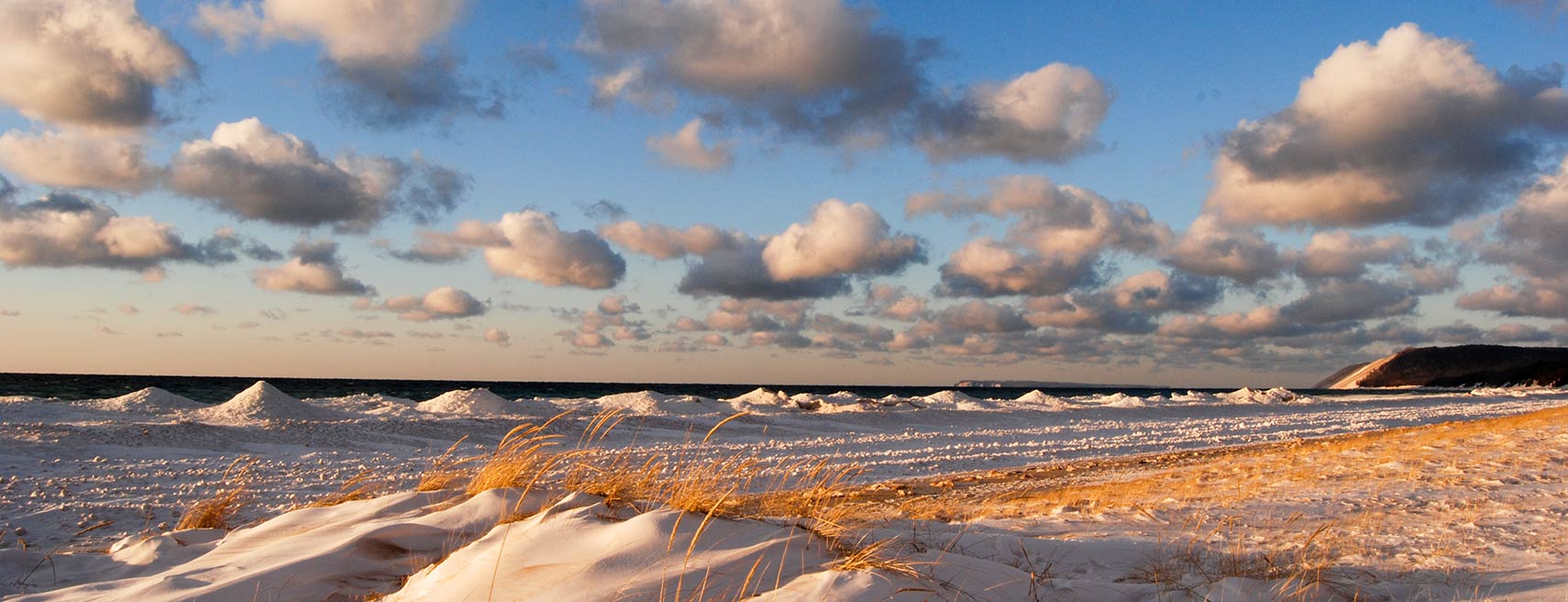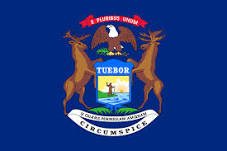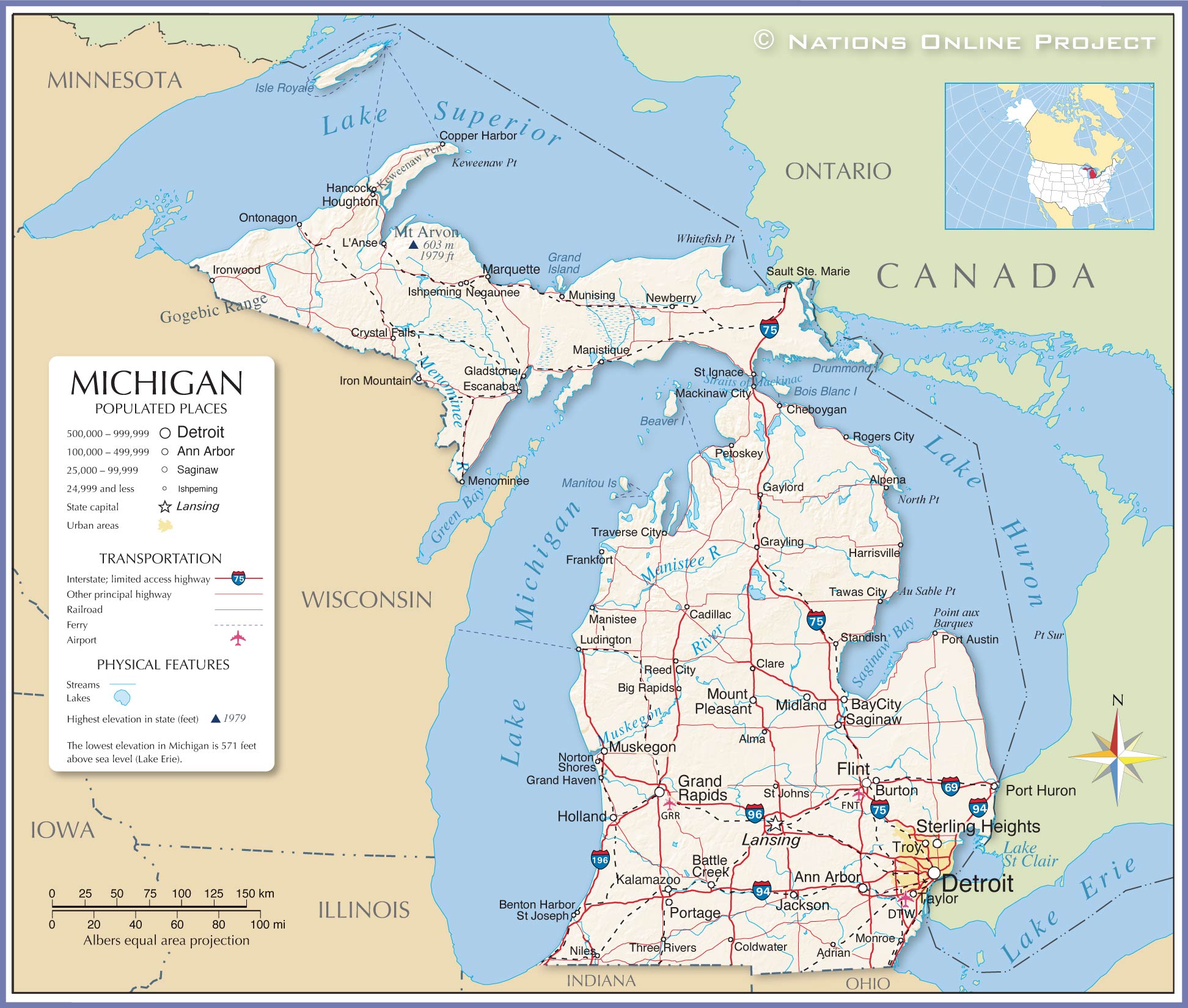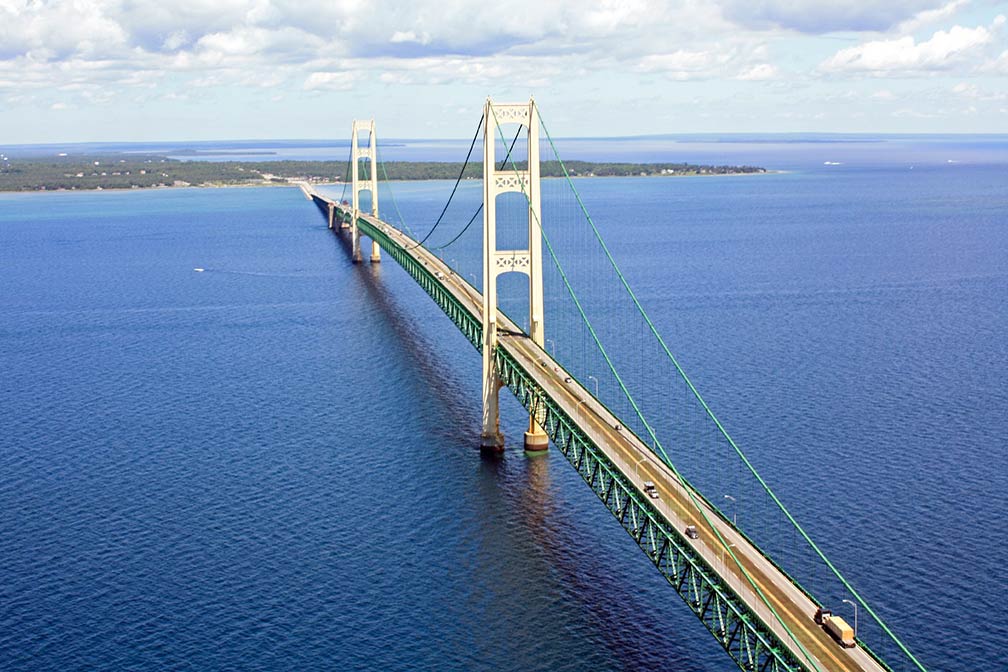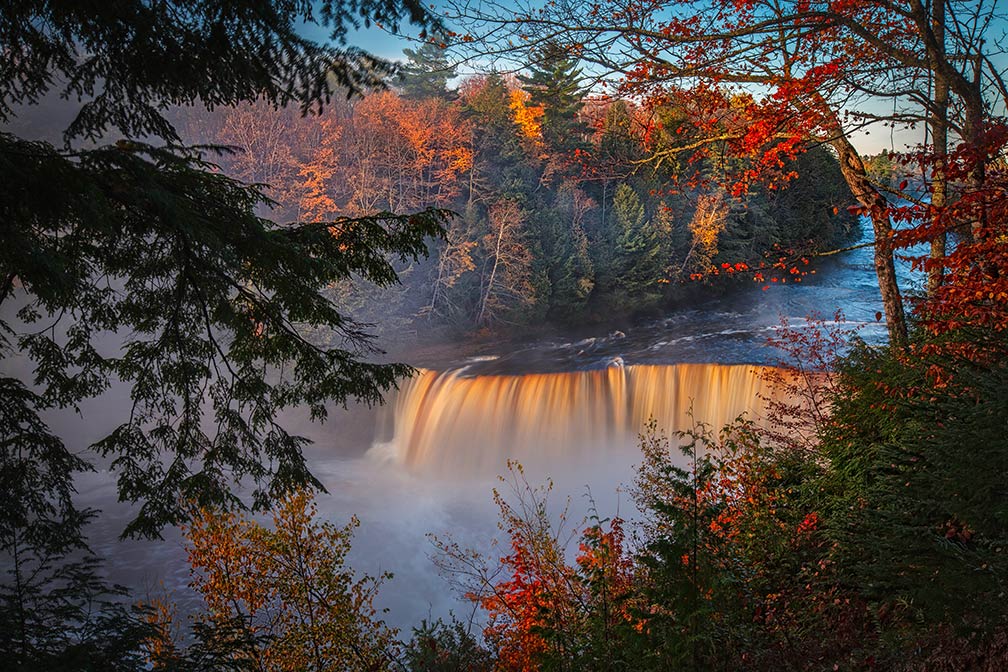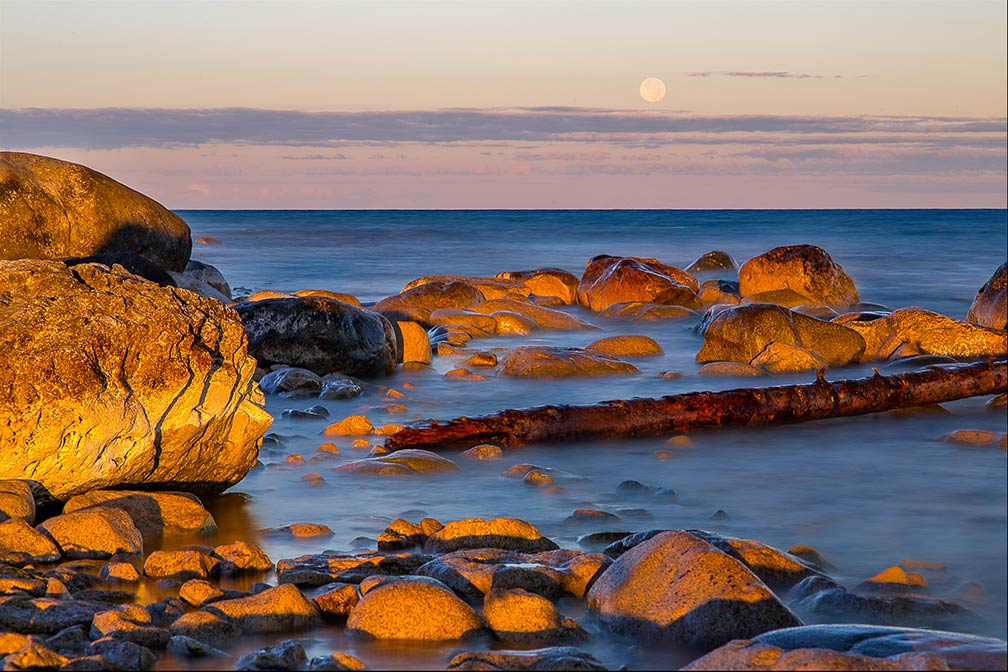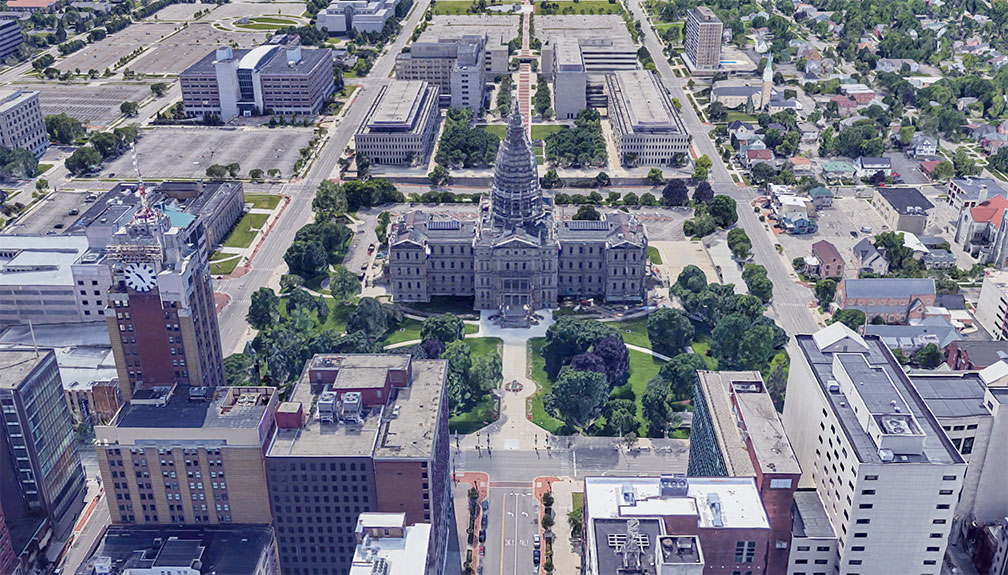Cities and Towns in Michigan
The map shows the location of following cities and towns in Michigan.
Major cities:
Detroit, a major industrial city and a Great Lakes shipping center; Grand Rapids (Michigan's second largest city), Warren, Sterling Heights, Lansing, Ann Arbor, Flint, Dearborn, and Livonia.
 Skyline of Detroit at the riverbank of Detroit River, with Renaissance Center to the right, seen from south. Michigan's primate city is the state's largest urban center, its metropolitan area, known as Metro Detroit, is home to 4.3 million people, almost half of Michigan's entire population.
Skyline of Detroit at the riverbank of Detroit River, with Renaissance Center to the right, seen from south. Michigan's primate city is the state's largest urban center, its metropolitan area, known as Metro Detroit, is home to 4.3 million people, almost half of Michigan's entire population.
Image: Crisco 1492
Other Michigan cities and towns:
Adrian, Alma, Alpena, Battle Creek, Bay City, Benton Harbor, Big Rapids, Burton, Cadillac, Cheboygan, Clare, Coldwater, Copper Harbor, Crystal Falls, East Lansing, Escanaba, Frankfort, Gaylord, Gladstone, Grand Haven, Grayling, Hancock, Harrisville, Holland, Houghton, Iron Mountain, Ironwood, Ishpeming, Jackson, Kalamazoo, Kentwood, L'Anse, Ludington, Mackinaw City, Manistee, Manistique, Marquette, Menominee, Midland, Monroe, Mount Pleasant, Munising, Muskegon, Negaunee, Newberry, Niles, Norton Shores, Ontonagon, Owosso, Petoskey, Pontiac, Port Austin, Port Huron, Portage, Reed City, Rogers City, Saginaw, Sault Ste. Marie, Saint Ignace, Saint Johns, Saint Joseph, Standish, Tawas City, Taylor, Three Rivers, Traverse City, Troy, and Wyoming.

